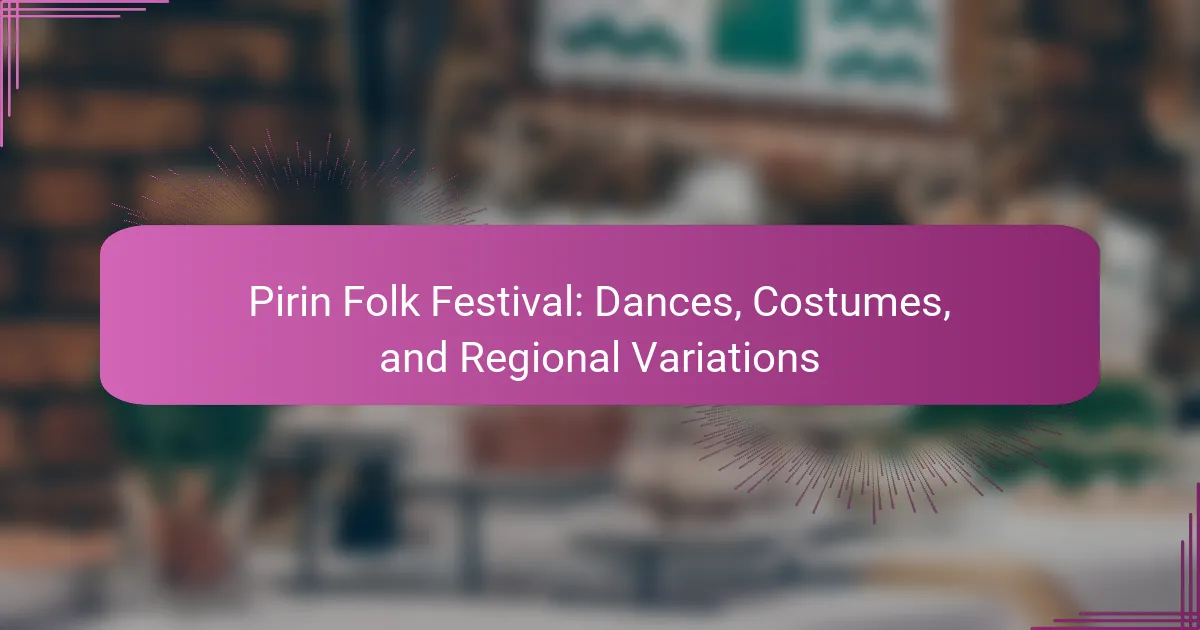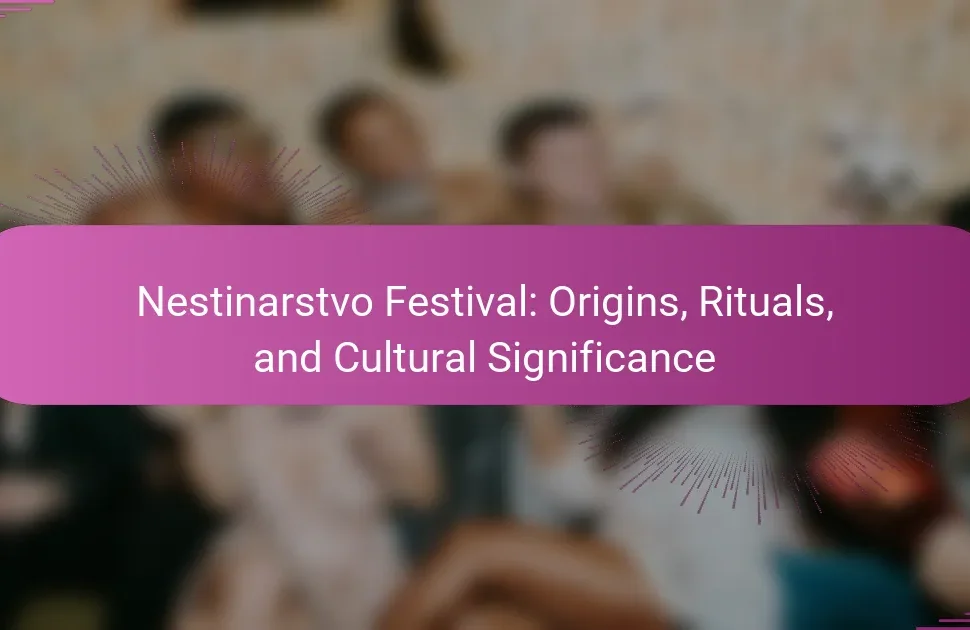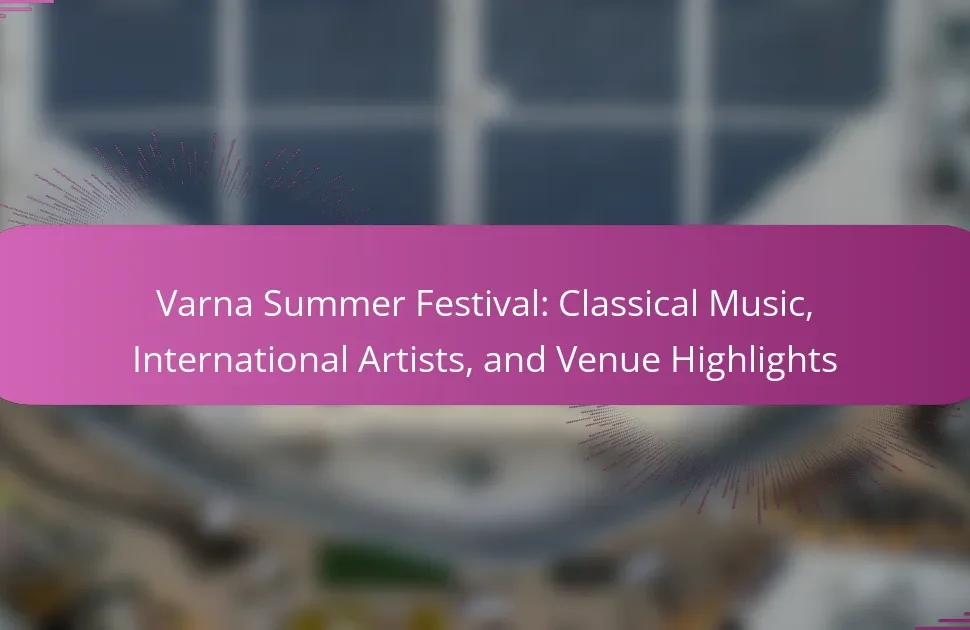The Pirin Folk Festival offers a unique opportunity to experience Bulgaria’s rich cultural heritage through its vibrant dances, traditional costumes, and regional variations. Attendees can enjoy authentic performances that showcase local folklore, explore distinct dance styles from various regions, and participate in community bonding activities. The festival also emphasizes the importance of preserving cultural traditions while adapting to modern sensibilities. Engaging with the festival allows for a deeper appreciation of Bulgaria’s diverse artistic expressions.

What are the key features of the Pirin Folk Festival?
The Pirin Folk Festival showcases vibrant dances, traditional costumes, and diverse regional variations. Key features include authentic performances that reflect local folklore, intricate costumes that highlight cultural heritage, and unique dance styles representing different areas of Bulgaria. The festival also emphasizes community participation, fostering a sense of unity among attendees. Additionally, it serves as a platform for preserving and promoting Bulgaria’s rich cultural traditions.
How do traditional dances reflect cultural heritage?
Traditional dances reflect cultural heritage by preserving historical narratives, social values, and community identity. The Pirin Folk Festival showcases diverse regional dances, each with unique costumes and styles that embody local traditions. These performances serve as a living archive of cultural practices, connecting generations through shared experiences. The festival highlights the importance of dance in expressing collective memory and fostering community ties, reinforcing cultural identity in a modern context.
What role do costumes play in the festival’s identity?
Costumes are essential to the Pirin Folk Festival’s identity, symbolizing cultural heritage and regional diversity. They reflect the unique characteristics of different communities, showcasing traditional craftsmanship and local colors. Costumes enhance the festival’s visual appeal, creating an immersive experience for participants and spectators. Additionally, they play a crucial role in preserving folklore and promoting cultural continuity.
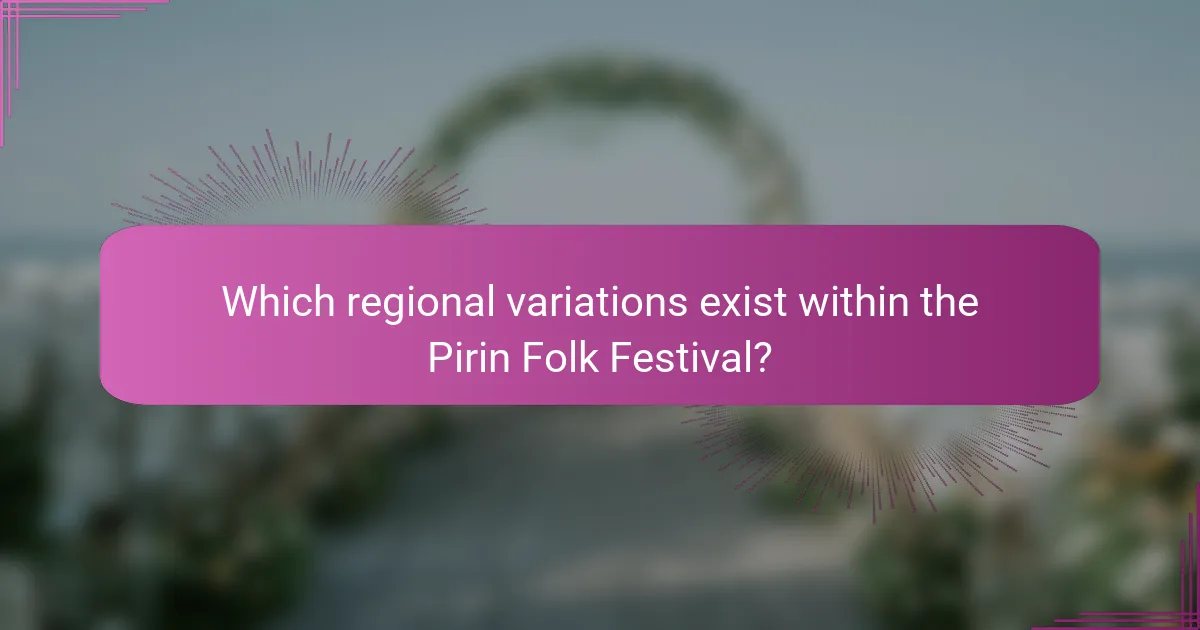
Which regional variations exist within the Pirin Folk Festival?
The Pirin Folk Festival features various regional variations influenced by local traditions. Each region showcases distinct dances, costumes, and musical styles. For example, the Blagoevgrad region emphasizes lively group dances, while the Kresna region highlights unique folk costumes with intricate embroidery. The festival celebrates these differences, preserving cultural heritage and promoting regional identity. Each performance reflects the community’s history and artistic expression, making the festival a rich tapestry of Bulgarian folk culture.
How do local interpretations of dances differ?
Local interpretations of dances at the Pirin Folk Festival vary significantly based on regional traditions and cultural influences. Each region showcases unique styles, rhythms, and costumes that reflect its history and social practices. For example, the dances from the Rhodope region often emphasize slower, more melodic movements, while those from the Pirin region tend to be faster and more energetic. These differences highlight the diverse cultural heritage within Bulgaria and enhance the festival’s overall experience. Regional variations can also be seen in the use of specific instruments and the incorporation of local folklore, further enriching the dance performances.
What unique costumes are associated with different regions?
The Pirin Folk Festival showcases unique costumes that reflect the cultural heritage of different regions. Each region features distinct patterns, colors, and materials. For example, the costumes from Blagoevgrad are known for their vibrant embroidery and traditional motifs, while those from the village of Kresna often incorporate wool and intricate designs. The costumes not only represent regional identity but also convey historical narratives through their craftsmanship.
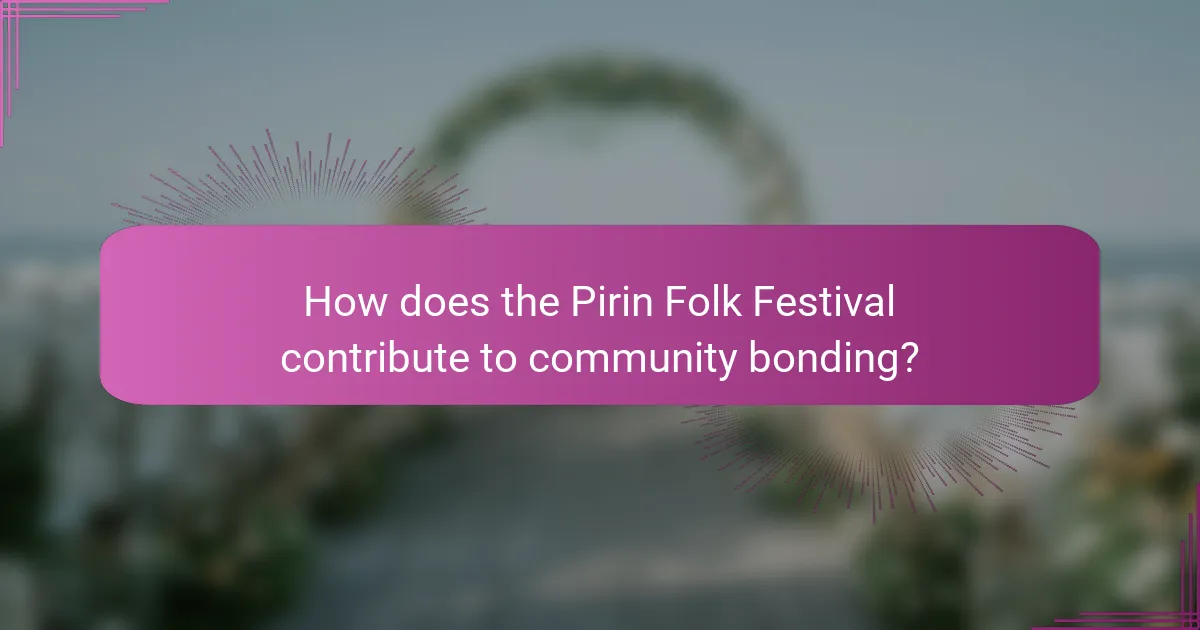
How does the Pirin Folk Festival contribute to community bonding?
The Pirin Folk Festival enhances community bonding through shared cultural experiences. Participants engage in traditional dances and showcase regional costumes, fostering a sense of belonging. This collective involvement strengthens social ties and promotes cultural heritage appreciation. As a result, the festival becomes a vital platform for uniting diverse community members.
What activities foster participation among attendees?
Engaging activities at the Pirin Folk Festival enhance attendee participation. Traditional dances, costume showcases, and interactive workshops immerse visitors in regional culture. Dance performances highlight local variations, encouraging audience involvement. Costume parades invite attendees to appreciate craftsmanship and heritage, fostering a sense of community. Interactive sessions allow participants to learn traditional dances, creating memorable experiences.
How do intergenerational practices enhance cultural transmission?
Intergenerational practices enhance cultural transmission by fostering connections between different age groups. The Pirin Folk Festival exemplifies this through its traditional dances and costumes, which are passed down through generations. These practices engage younger participants, ensuring the preservation of regional variations in folk culture. As a result, the festival becomes a living archive of cultural heritage, enriching community identity and continuity.
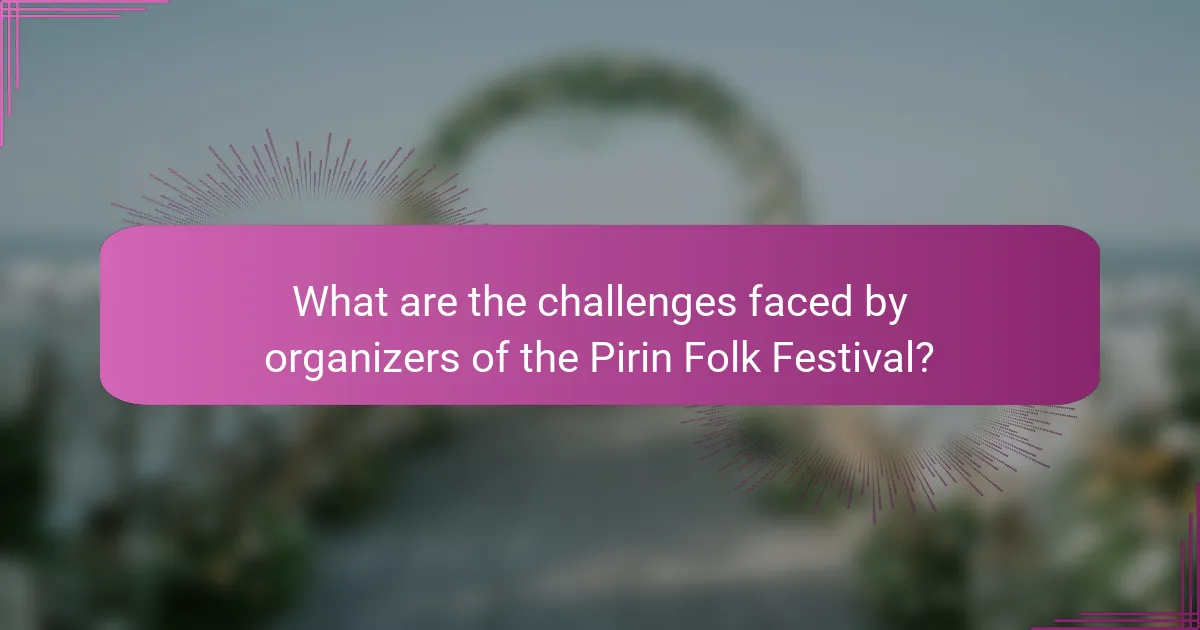
What are the challenges faced by organizers of the Pirin Folk Festival?
Organizers of the Pirin Folk Festival face challenges such as logistical coordination, cultural preservation, and audience engagement. Managing diverse performances requires careful scheduling and resource allocation. Additionally, maintaining authentic regional traditions while appealing to modern audiences can be complex. Weather conditions also impact attendance and performance quality.
How do weather conditions impact festival attendance and activities?
Weather conditions significantly affect festival attendance and activities. Adverse weather can deter visitors, while pleasant conditions enhance participation and enjoyment.
For the Pirin Folk Festival, sunny weather typically boosts attendance, encouraging more people to engage in traditional dances and wear regional costumes. Rain or extreme heat may lead to reduced activities or changes in scheduling. Festivals often adapt by providing shaded areas or indoor performances to maintain engagement despite weather challenges.
Overall, favorable weather creates an inviting atmosphere that amplifies the cultural experience, while poor conditions can limit the festival’s full potential.
What strategies are employed to maintain authenticity?
The Pirin Folk Festival employs several strategies to maintain authenticity in its dances, costumes, and regional variations. Local performers are trained in traditional techniques, ensuring cultural practices are accurately represented. Collaboration with cultural experts helps preserve historical accuracy. Regular workshops and community involvement foster engagement with younger generations, promoting traditional knowledge transfer. Additionally, the festival emphasizes the use of authentic materials in costumes, reflecting regional craftsmanship.
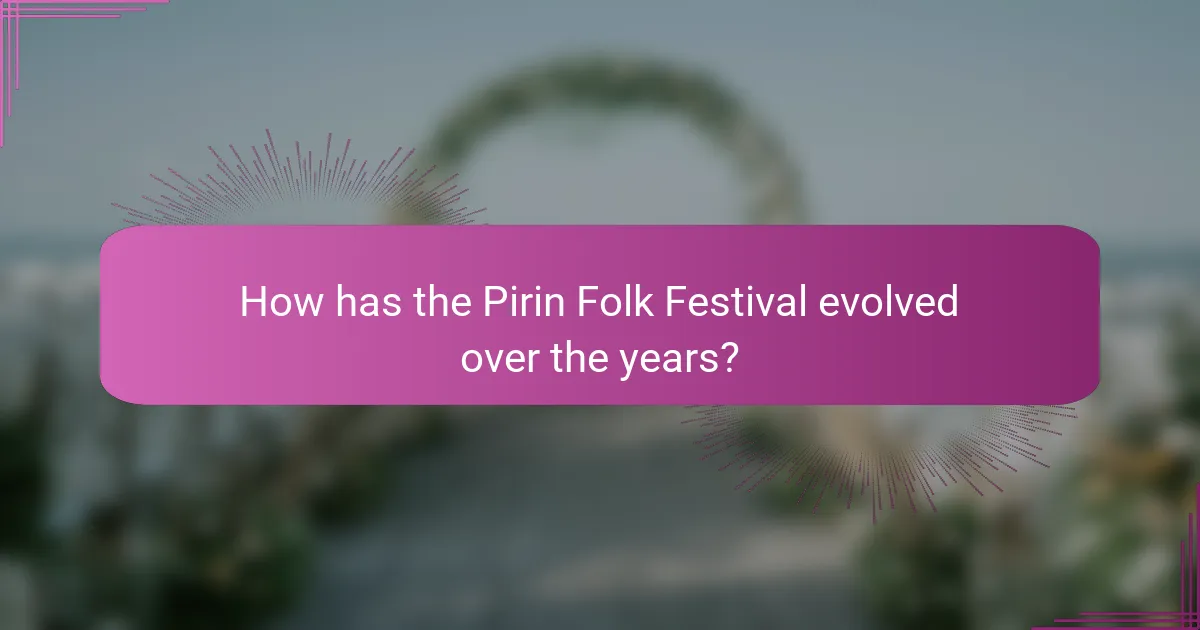
How has the Pirin Folk Festival evolved over the years?
The Pirin Folk Festival has evolved significantly since its inception in 1940. Initially focused on preserving traditional Bulgarian music and dance, it now showcases a wider range of cultural expressions, including contemporary interpretations.
Over the years, the festival has expanded its geographical reach, inviting performers from various regions, which has enriched its diversity. For instance, the inclusion of unique regional variations highlights the distinctiveness of local traditions, such as the Rhodope and Pirin dances.
The festival has also adapted to modern sensibilities, incorporating educational workshops and interactive sessions to engage younger audiences. This evolution reflects a commitment to cultural preservation while embracing innovation.
Overall, the Pirin Folk Festival continues to celebrate its roots while evolving to remain relevant in a changing cultural landscape.
What modern influences are shaping traditional practices?
Modern influences are reshaping traditional practices at the Pirin Folk Festival through globalization, technology, and cultural exchange. Globalization introduces diverse dance styles and music, enhancing the festival’s appeal. Technology facilitates wider access to traditional performances and costumes, allowing for greater appreciation and participation. Cultural exchange fosters collaboration among regional groups, leading to innovative variations in dances and costumes. These influences enrich the festival while maintaining its core identity.
Which technological advancements are being integrated into the festival?
Technological advancements integrated into the Pirin Folk Festival include digital platforms for ticketing, augmented reality experiences for costume displays, and live streaming of performances. These innovations enhance audience engagement and accessibility. Drones capture aerial footage, offering unique perspectives of the festival. Mobile apps provide schedules and interactive maps, improving visitor experience.
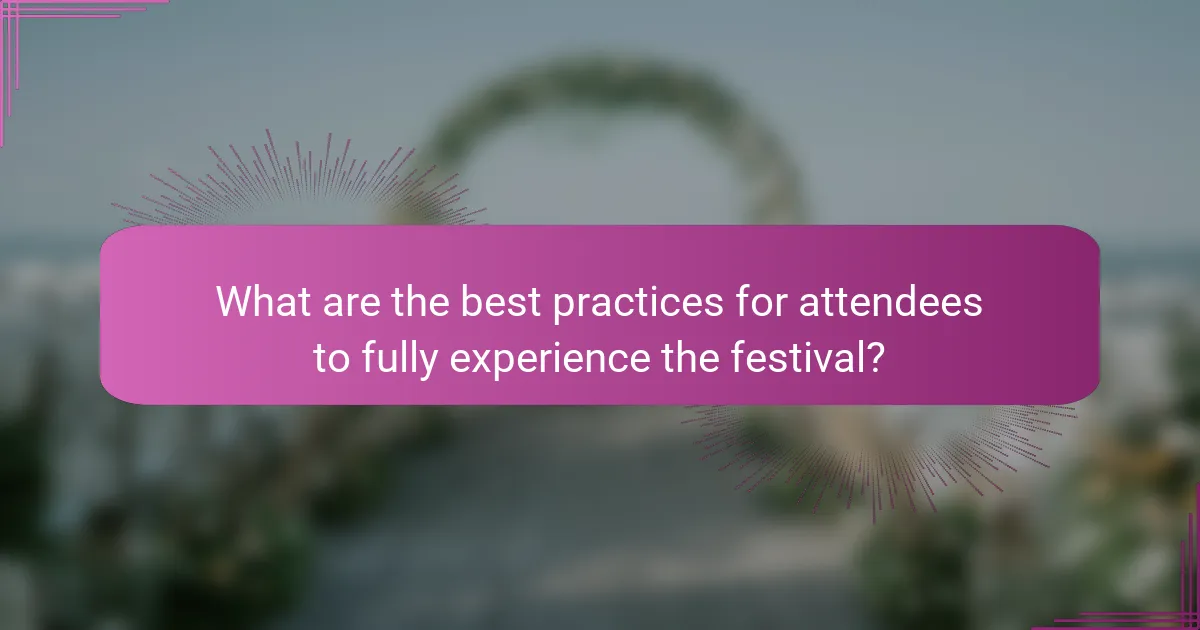
What are the best practices for attendees to fully experience the festival?
To fully experience the Pirin Folk Festival, attendees should engage with performances, immerse in local culture, and participate in workshops.
1. Attend diverse dance performances to appreciate regional variations.
2. Wear or admire traditional costumes to connect with the festival’s heritage.
3. Join workshops to learn folk dances and music firsthand.
4. Taste local cuisine to enhance cultural immersion.
5. Interact with performers and locals for authentic experiences.
How can visitors respectfully engage with local traditions?
Visitors can engage with local traditions at the Pirin Folk Festival by observing customs respectfully and participating appropriately. Understanding the significance of dances and costumes enhances appreciation. Attendees should ask permission before taking photos and avoid disrupting performances. Learning about regional variations fosters deeper connections with the culture. Engaging with local artisans and performers can enrich the experience while promoting cultural exchange.
What tips can enhance participation in dances and activities?
To enhance participation in dances and activities at the Pirin Folk Festival, encourage community involvement and showcase cultural significance. Promote workshops to teach traditional dances, allowing attendees to learn and practice. Utilize vibrant costumes to attract interest and create an immersive experience. Foster a sense of belonging by organizing group performances, which can build camaraderie among participants. Highlight the unique regional variations of the dances to educate and engage the audience effectively.
